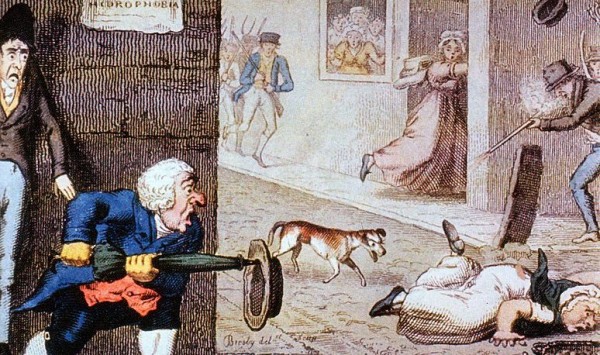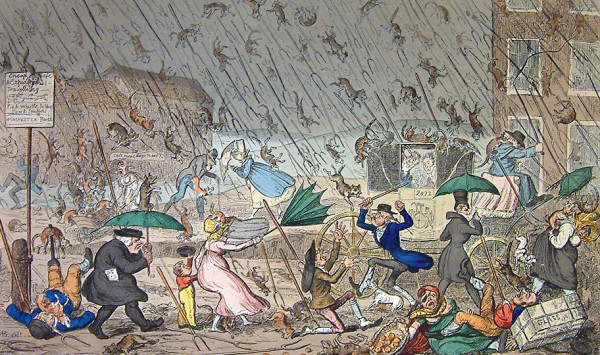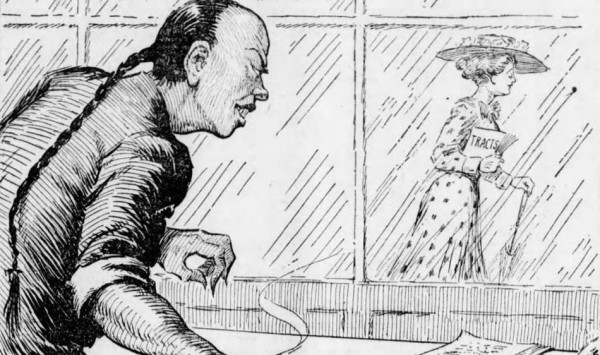MAD DOGS & BROOKLYN MAYORS (1844)

******************************************************************************************************************************** Brownstone Detectives investigates the history of our clients’ homes. The story you are about to read was composed from research conducted in the course of one of those investigations. Do you know the history of YOUR house? ******************************************************************************************************************************** In Brooklyn in 1843, there was a dog problem. A MAD dog problem. The people of Brooklyn – in what makes up Brooklyn Heights and the Downtown Brooklyn area today – were getting fed up with the number of strays, a good number of which were exhibiting “mad” tendencies, biting Brooklynites from time to time. A newspaper of the period complained of how “our streets are filled with miserable, half-starved curs whose dismal howlings make night hideous.” They demanded, thus, that a law be enacted to “shield us from that frightful malady – hydrophobia.” A FEAR OF WATER Back in the day, the disease that we know today as rabies was called hydrophobia. The disease was labeled hydrophobia – or a fear of water – because its subjects were not only unable to swallow water, but they had such a fear of it that it sent them into spasms or running from its very presence. And, of course, there was no cure for hydrophobia. Although, there was no shortage of quacks who sold “instant cures” to the masses through the mails or in their offices – such as the goodly Dr. S. Bachelder, across the East River at 343 Broome Street on Manhattan. Bachelder offered “Thompsonian and other Botanic Medicines” for […]
IT’S RAINING CATS! HALLELUJAH! (1887)

******************************************************************************************************************************** Brownstone Detectives investigates the history of our clients’ homes. The story you are about to read was composed from research conducted in the course of one of those investigations. Do you know the history of YOUR house? ******************************************************************************************************************************** It once rained cats on Grand Street. The felines were tossed and dropped rather dramatically from the rafters of a playhouse in Williamsburgh. When the Society For the Prevention of Cruelties to Animals got wind of the act, they decided to buy a ticket to the show, “Soap Bubble”… IT’S RAINING CATS…HALLELUJAH! In Williamsburg, in the late 1800s, there existed a show hall which sat in the middle of Grand Street between Bedford and Driggs avenues at No. 166. Known for a time as the Grand Street Museum, it had a run of only five years between 1885 and 1889. But the Museum made the papers in 1887, for a cruel cat storm that played out upon their boards… In the latter part of 1887, a show by the name of “Soap Bubble,” was making its debut in the district. Although it wasn’t creating much of a stir, it so happened that a letter about the show was received at the offices of the Society for the Prevention of Cruelty to Animals. The letter made a serious accusation, referring to “cruelty to cats” that was being “exhibited nightly” during the play. The writer, who noted he’d spent an evening at the theatre, stated that during the first act a “large number […]
WONG SING BOW’S WHITE WIFE MINNIE (1877)

******************************************************************************************************************************** Brownstone Detectives investigates the history of our clients’ homes. The story you are about to read was composed from research conducted in the course of one of those investigations. Do you know the history of YOUR house? ******************************************************************************************************************************** In 1886, the life that Wong Sing Bow had been building up for years began to crumble before his eyes. A naturalized U.S. citizen, Wong Sing had been born “a subject of the emperor of China.” But he had been in America “long enough to save considerable money and to appreciate the beauty of Irish girls,” said one paper of the time. Wong Sing spoke English fluently and was often called upon by the authorities to interpret. With all that Wong Sing had going for him, it had originally seemed likely that he was going to have a good life. But this was the 1800s. And Wong Sing was Chinese. ANTI-CHINESE PREJUDICE IN 19TH CENTURY BROOKLYN After Wong Sing’s arrival in the U.S. around 1870, according to one paper, “the celestial youth immediately fitted himself in the groove of circumstances. “He decided to become intensely American. He shaved his cue off, doffed his Chinese garb, proclaimed his intention to become a citizen, and went to Sunday school ‘all samme like Melican man.’” Apparently, the papers, like most Americans, had no politically correct bent in those days. But the Chinese were located squarely at the bottom of the social construct – just slightly beneath the Irish and the Germans – and so […]